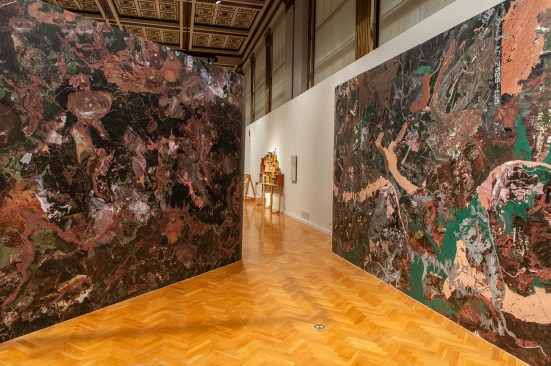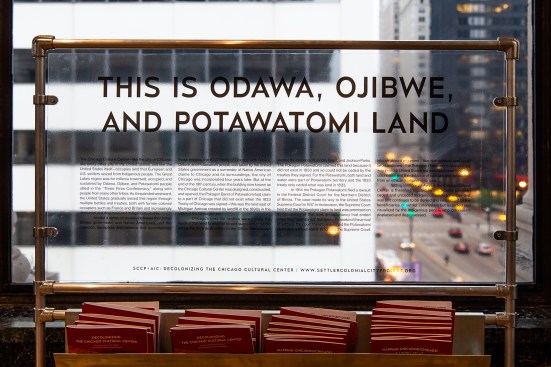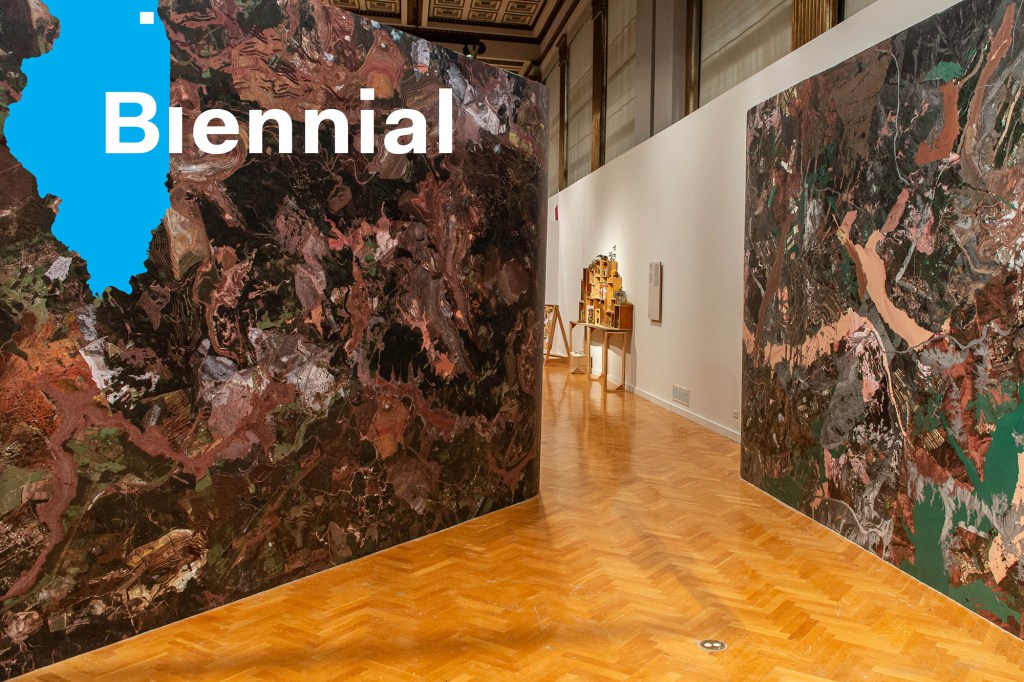ARCHITECT contributor Aaron Betsky shares his five most compelling installations from this year’s Chicago Architecture Biennial, which opened Sept. 19.
1) “The Plot: Miracle and Mirage,” a plywood box designed by Alejandra Celedon, Nicolas Stutzin, and Javier Correa. Peer over the top of the walls, and you see Santiago, Chile, mainly from the air. The view of sprawl is dazzling, frightening, and strangely alluring. A barely audible voice-over explains that the city’s spread is the result of deliberate fiscal policies instituted by the “Chicago Boys,” economists from the University of Chicago hired by General Pinochet during his dictatorship that ended in 1990—hence the title of the piece. The installation may ignore the complex variety of reasons why sprawl has happened around the world and offers no real analysis of what it is, or what we could do about it. But the view remains mesmerizing.
2) Do Ho Suh’s video of Peter and Alison Smithson’s Robin Hood Garden, a Brutalist 1970s social housing complex in East London, being torn down. The pan across the interiors revealed by the deconstruction process in 2017 evokes the lives that unfolded there. The film was shown earlier at the Victoria & Albert Museum and the Venice Biennale, where it was part of a wider display on preservation and destruction—a context that is, unfortunately, completely missing here.

Cory Dewald
3) The Museum of Oil, by Territorial Agency, founded by Ann-Sofi Rönnskog and John Palmesino. This is an installation of data points, aerial shots, scrolling texts, and photographs that documents the exploitation of oil and gas throughout North America. The display remains a bit flat, especially as an analysis of the spatial realities of the extraction, refining, and processing of these resources. What, for instance, is the relation between geology and patterns of settlement, or between the erection of processing plants and urban form? Iwan Baan’s accompanying photographs help to make some of this clear, but only by implication.
4) The empty dance studio in the Chicago Cultural Center, where Forensic Architecture (FA) was planning to display evidence of its investigation into the death of Harith Augustus, a barber who was killed by police in Chicago’s South Shore in 2018. FA (which collaborated with Invisible Institute) decided not to mount any videos or photographs of the incident, and the result makes clear how unsuitable the Chicago Cultural Center is for an installation, and how banal most of its spaces are. It’s a reflection on our failure to recognize and adequately use parts of our cultural legacy. I realize that this was an unintended consequence of the display, which asks visitors to go online to see the results of FA’s full investigation.

Cory Dewald
5) Settler Colonial City Project’s naming project (mounted in collaboration with the American Indian Center), whose simple texts, spread throughout the Cultural Center, evoke the Native American spaces that were previously in the city, and highlight the fact that some of the building’s material was made with exploited labor. All you get, however, are the words. Why showing photographs or paintings of what was lost, or how the land was appropriated, would somehow have detracted from that message, I do not know.
Aaron Betsky is a regularly featured columnist whose views and conclusions are not necessarily those of ARCHITECT magazine nor of the American Institute of Architects.
For more Biennial coverage, see Edward Keegan’s five takeaways here.
